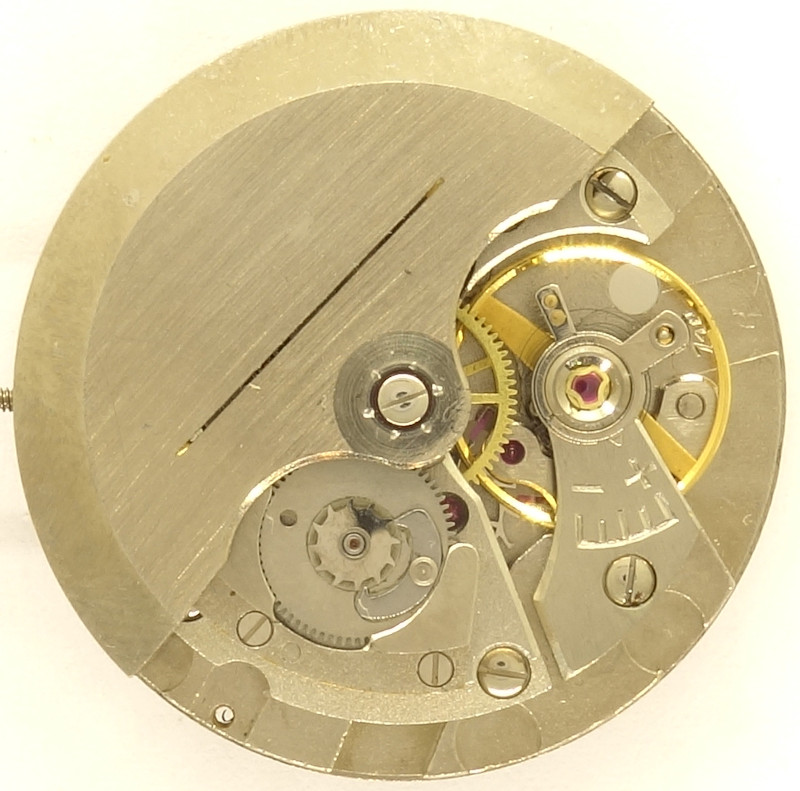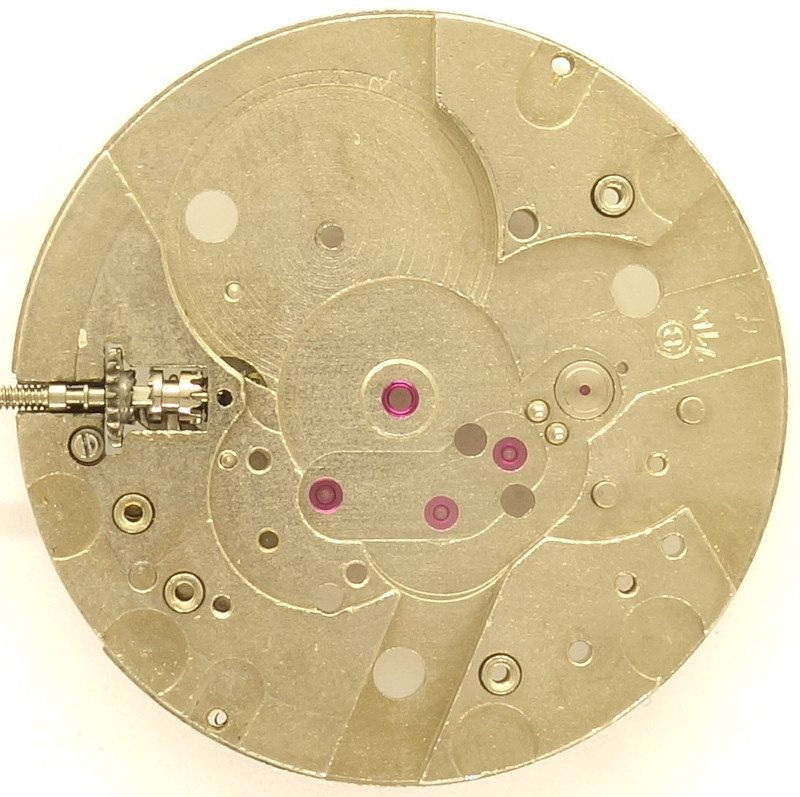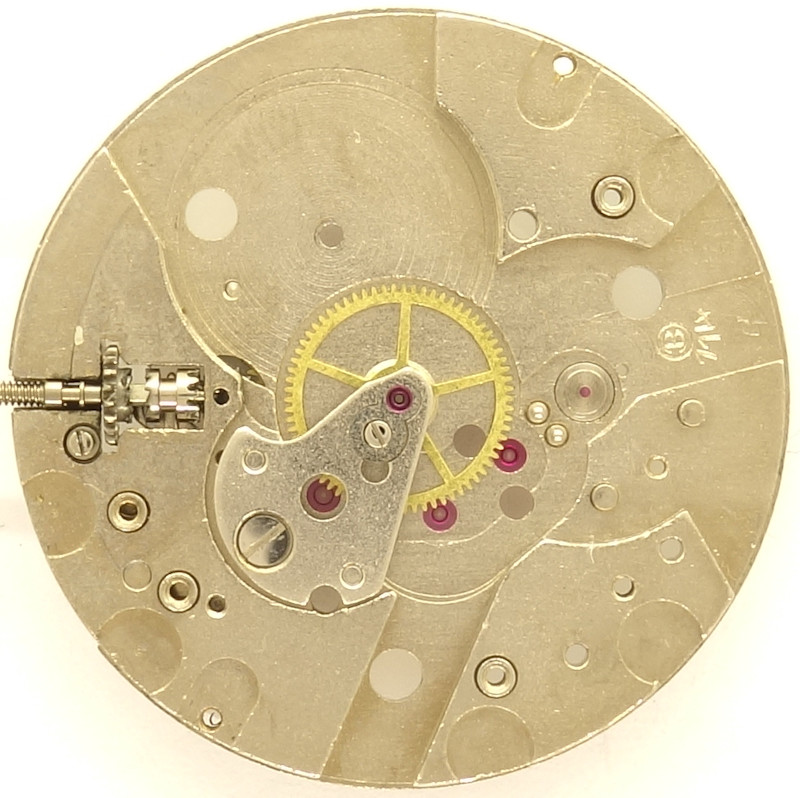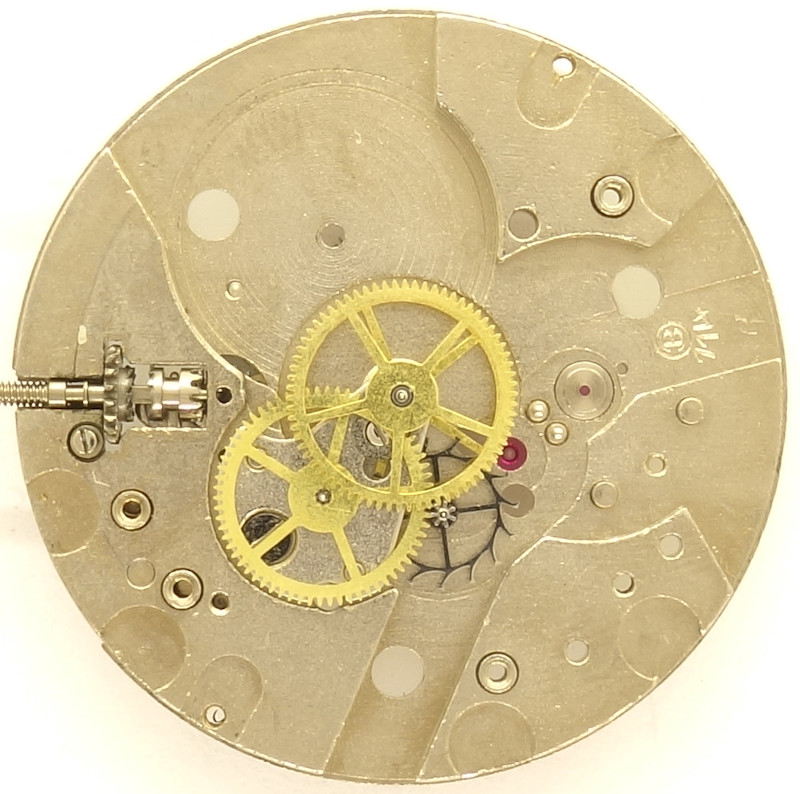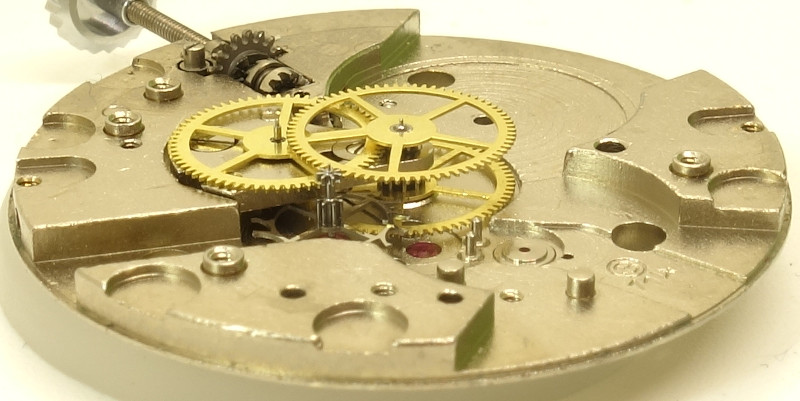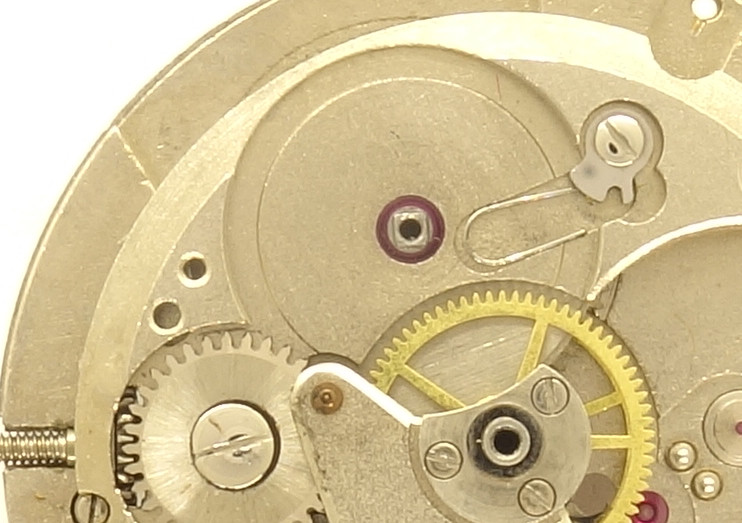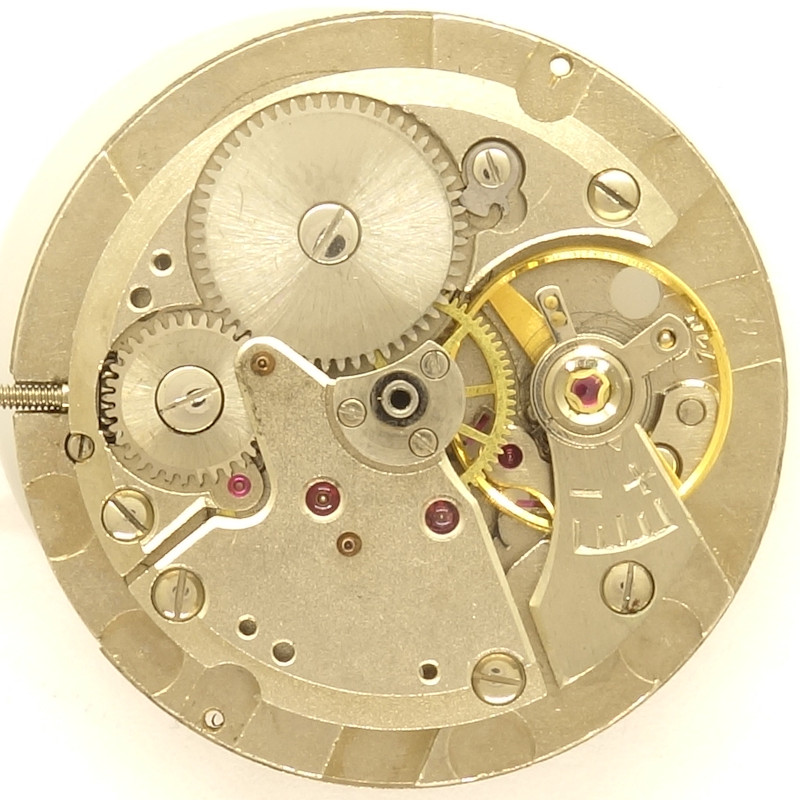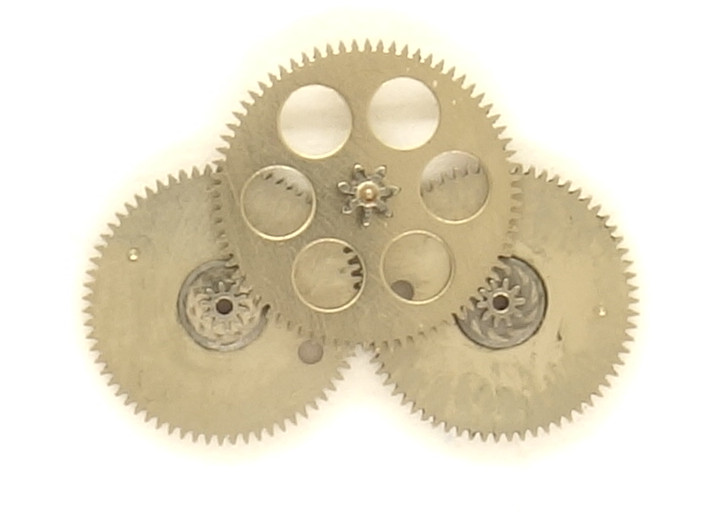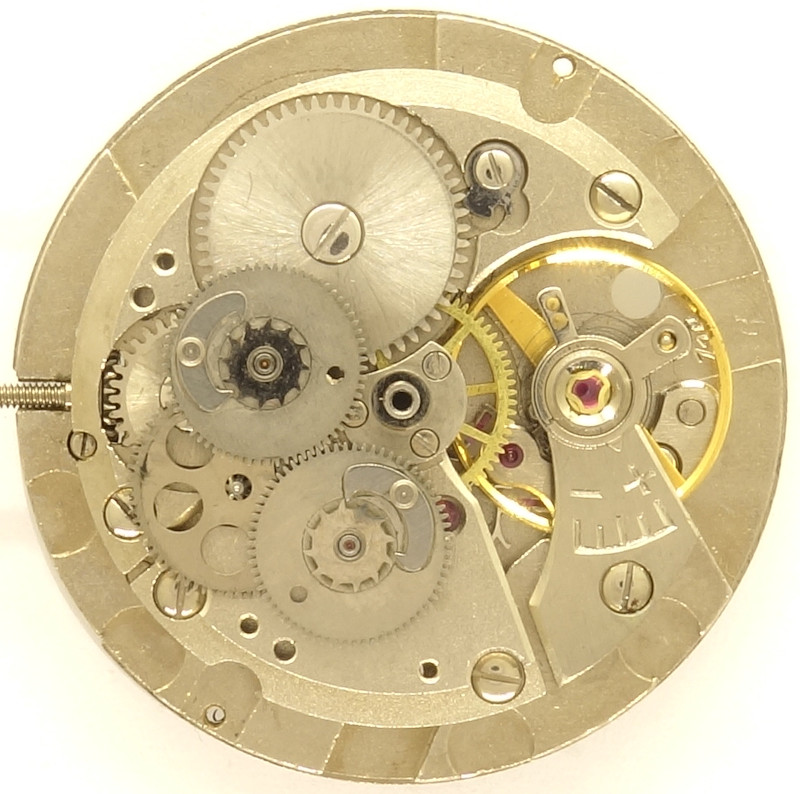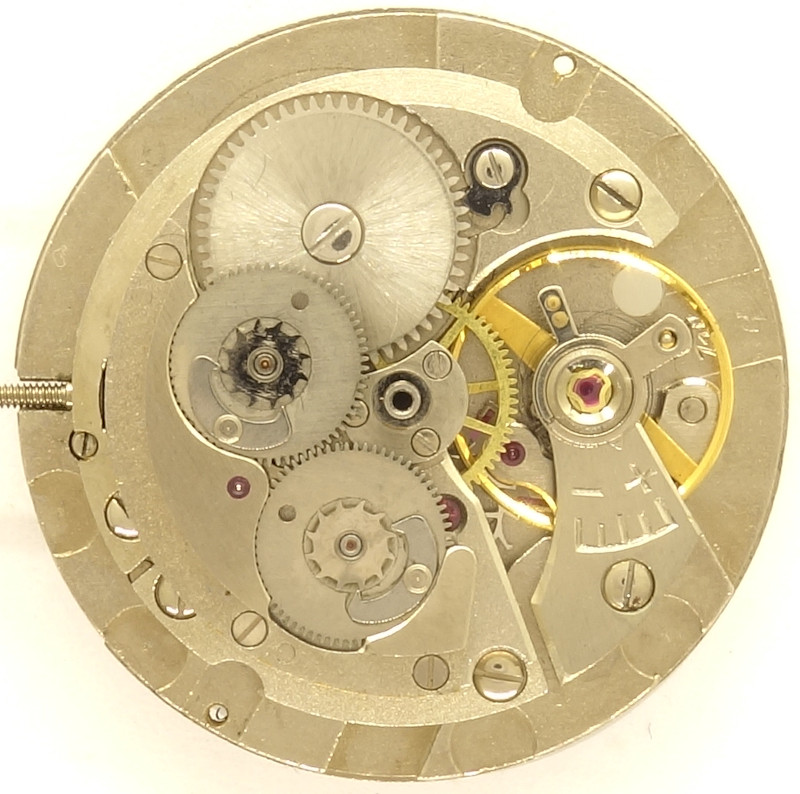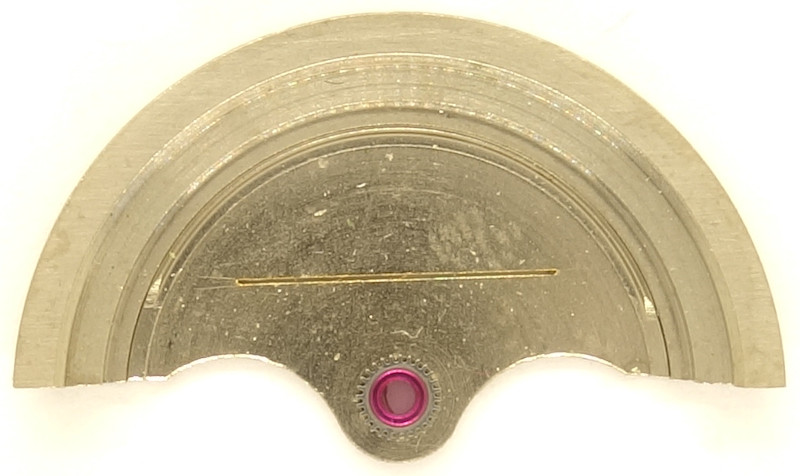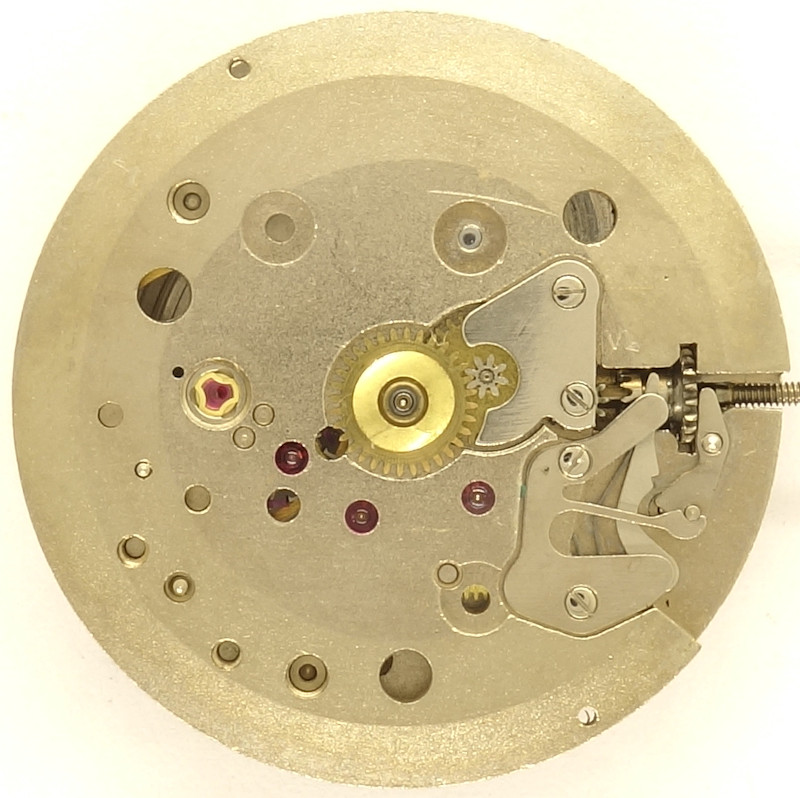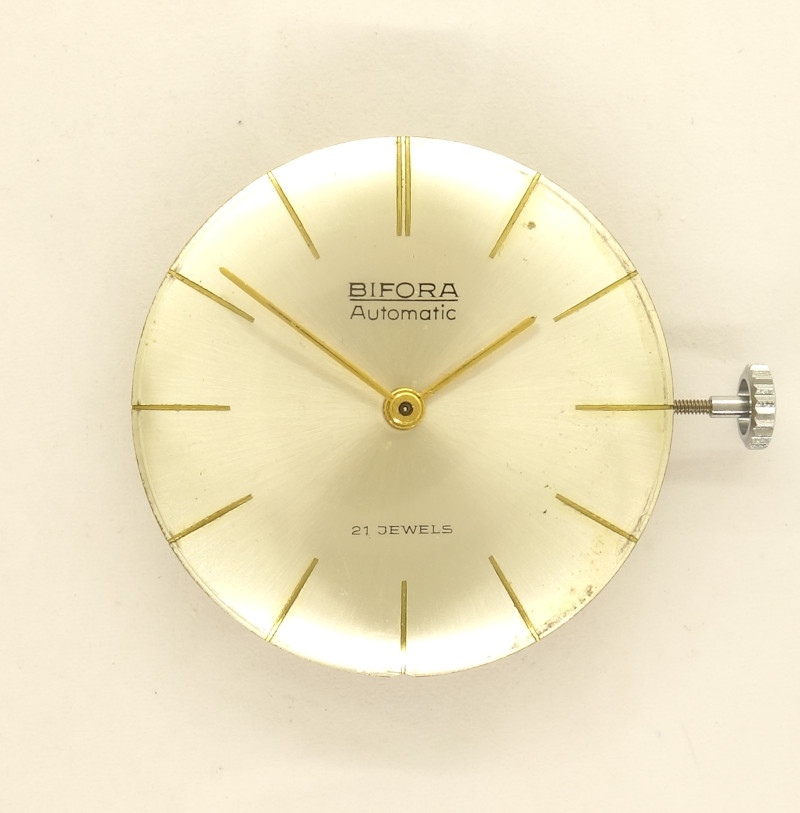Description
In 1958, the pretty modern built Bifora debuted, a 11 1/2 ligne selfwinding movement with twin pawl changer.
The base plate shows the good execution of this movement, all important bearings contain rubies and even the center minute wheel is ruby-beared.
As usual in the 1950s, this movement uses a directly driven center minute wheel, beared under an own cock.
The remaining gear train is typical for a movement with directly driven center seconds indication: Third wheel, center seconds wheel and finally the filigree steel escape wheel.
Unlike later movements, this is a massive and not a pillar construction.
As balance, a modern screw-less anular balance is used, which is beared in two inhouse Bishock shock-protecting bearings.
It beats contemporarily slow with 18000 A/h can be adjusted only directly at the hairspring key. In return, it already uses a moveable stud to minimize the beat error.
Even the upper mainspring barrel bearing has got a ruby, but probably only for the reason to reach the well-marketable number of 21 jewels.
You can see here the two brass bearings for the two pawl changer gears and the ruby bearings for the reduction wheel, which engages with the crown wheel.
The selfwinding mechanism consists of only three parts, two identical pawl changer gears, whose inner/lower gear engages with the reduction wheel. This meams, both turn their inner part always in the same direction.
In this video, you see the winding by the oscillating weight and how regardless of its turning direction (and thus the turning direction of the upper pawl changer wheel) always one of the two gears spins freely, while the other one transmits the power.
Since the two outer sprockets of the ratchet changer also mesh with each other stationary, i.e. both wheels turning in opposite directions, it is clear that the pawls on the pawl changer wheels ensure that they is always one wheel idling while the other is transmitting the power.
On manual wind, both gears spin freely and detatch the oscillating weight.
On the lower side of the pawl changer wheel, you can see the riveted axle, which bears the pawl on the upper side of the wheel.
It is noteable, that both wheel are beared on one side only, the upper side is held in place only by the cover between position 7 and 10 o’clock.
The oscillating weight, which engages only with the upper pawl changer wheel, is ruby beared.
Since the Bifora 114 does not have a date indication, the dial side looks pretty clean. On the left there’s in inhouse Bishock bearing, on the right the yoke winding system.
In the lab
Except one value with a large deviation, whose cause is unknown, the rates are quite satisfactory.
Timegrapher result
| horizontal positions | |||
|---|---|---|---|
| dial up | -9 s/d | 215° | 0.2ms |
| dial down | -7 s/d | 252° | 0.3ms |
| vertical positions | |||
| crown right (12 up) | -46 s/d | 159° | 0.7ms |
| crown up (3 up) | +-0 s/d | 211° | 0.8ms |
| crown left (6 up) | +12 s/d | 222° | 0.4ms |
| crown down (9 up) | +29 s/d | 178° | 0.1ms |
Technical data
| Manufacturer: | Bifora |
| Caliber: | 114 |
| Size: | 11 1/2''' (measured: 25,7mm) |
| A/h: | 18000 |
| Number of jewels: | 21 |
| Escapement: | Pallet lever |
| Balance types: |
Nickel anular balance (two legs) |
| Shock protection(s): |
Bidlingmaier (Bifora) |
| Balance bearing / direction hairspring: | Counterclockwise |
| Moveable stud: | yes |
| Adjust mechanism: | Hairspring key |
| Construction: |
|
| Construction type: | solid construction |
| Winding mechanism: | yoke winding system |
| Setting lever spring: | 2 hole(s) |
| Features: |
|
| References: |
Flume: K3 228 |
| Mentioning in literature (years): | 1964 |
| Production years: | 1958-1965 |
| Inventory number: | 22013 |
